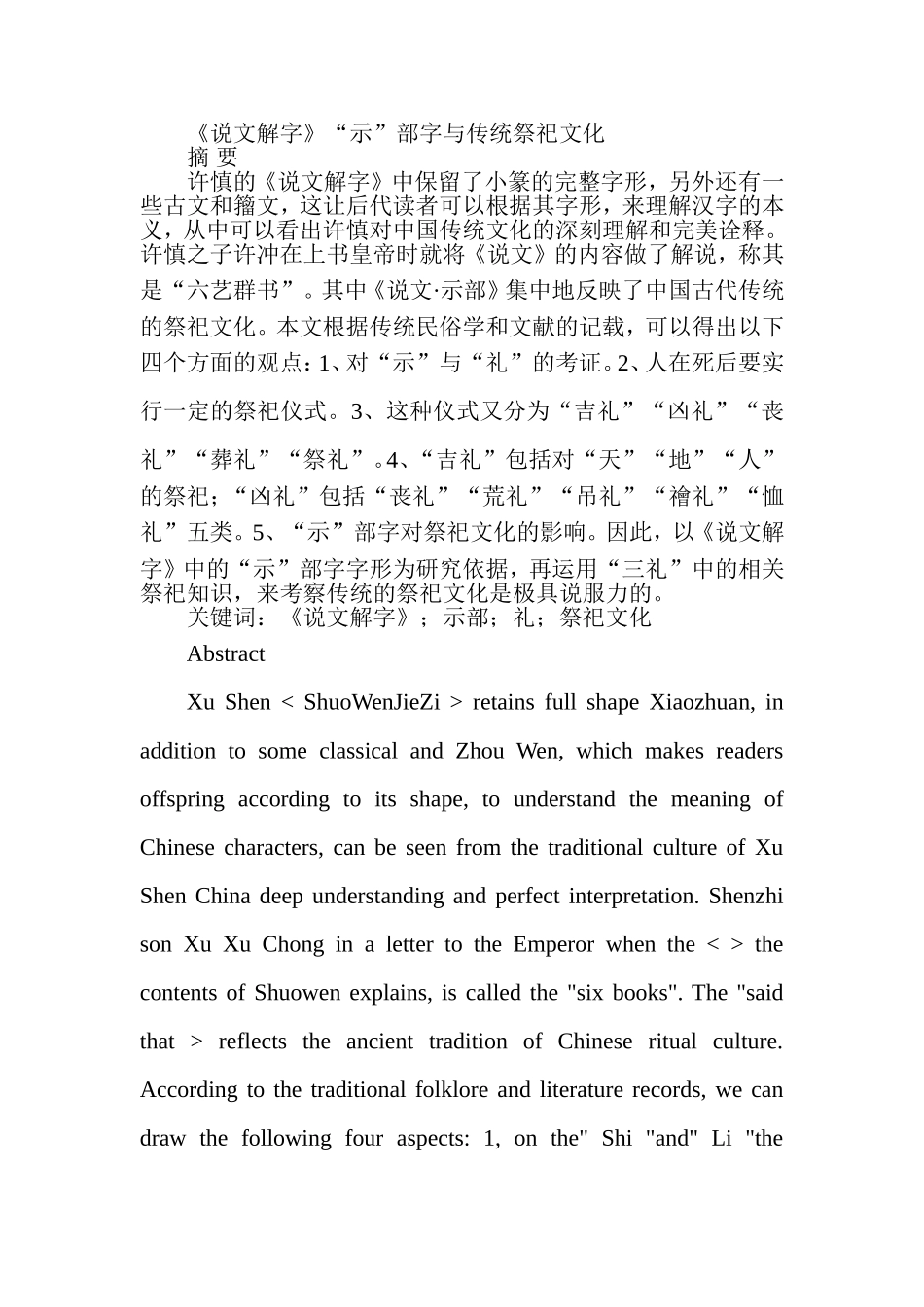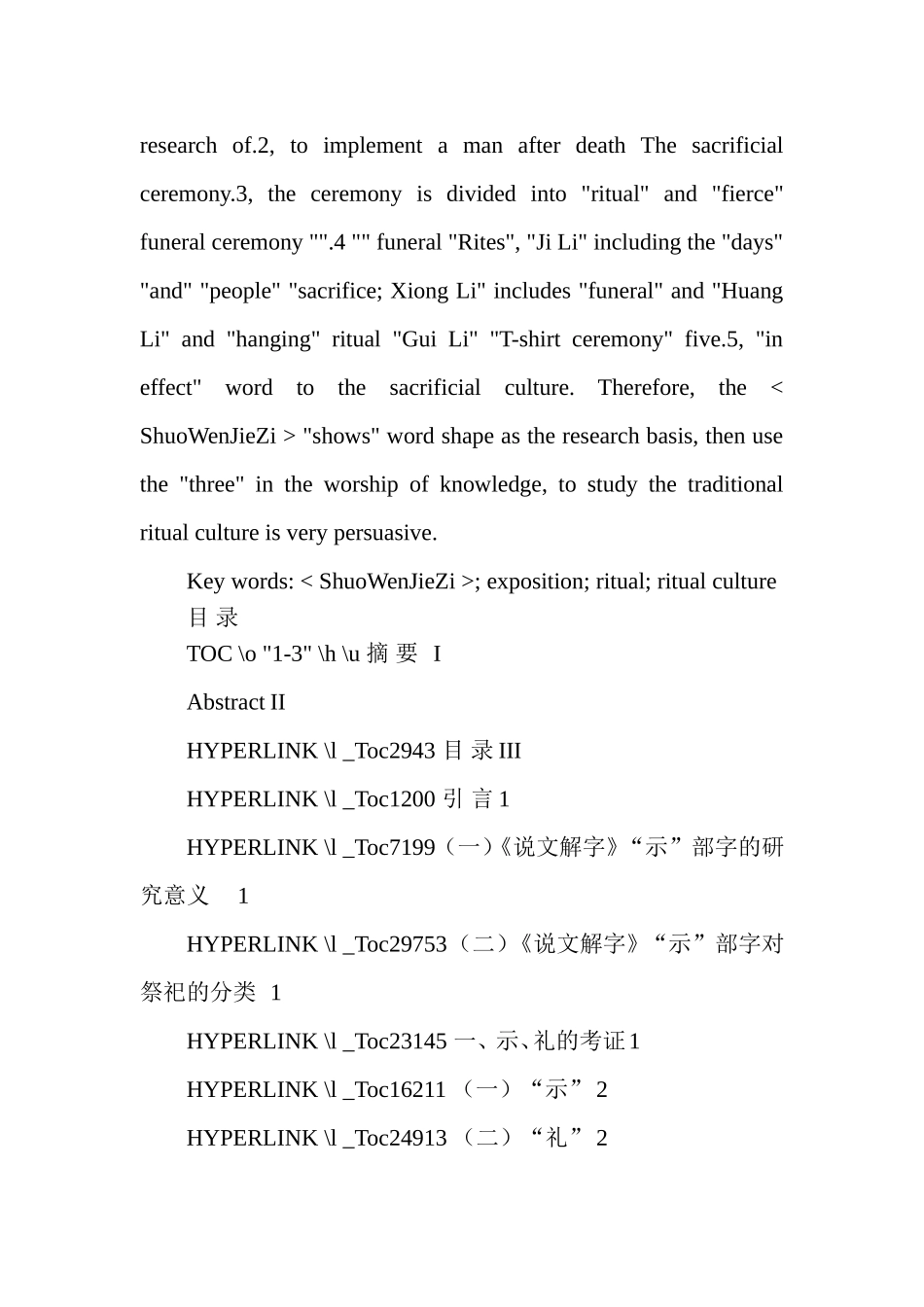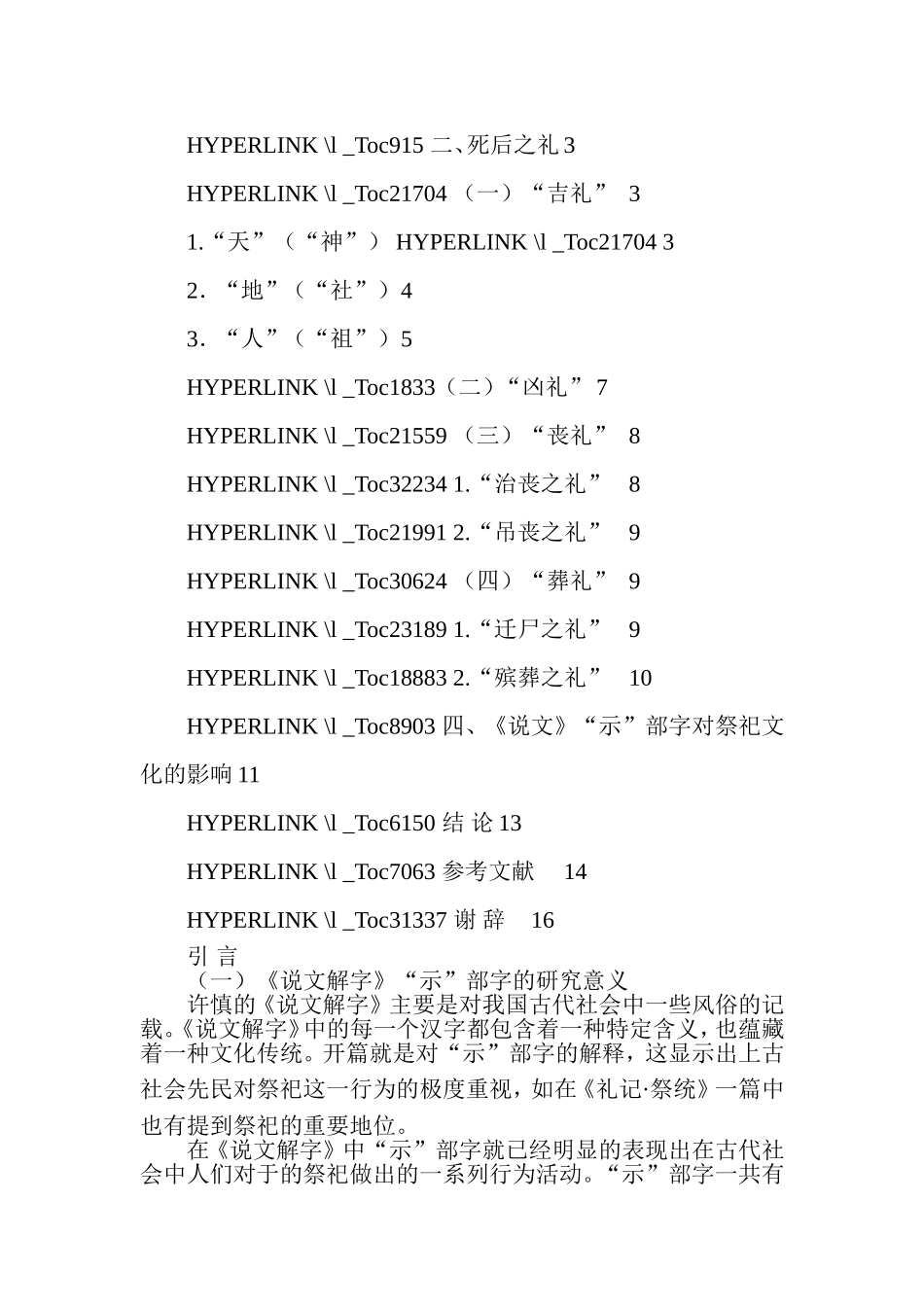《说文解字》“示”部字与传统祭祀文化摘 要许慎的《说文解字》中保留了小篆的完整字形,另外还有一些古文和籀文,这让后代读者可以根据其字形,来理解汉字的本义,从中可以看出许慎对中国传统文化的深刻理解和完美诠释。许慎之子许冲在上书皇帝时就将《说文》的内容做了解说,称其是“六艺群书”。其中《说文·示部》集中地反映了中国古代传统的祭祀文化。本文根据传统民俗学和文献的记载,可以得出以下四个方面的观点:1、对“示”与“礼”的考证。2、人在死后要实行一定的祭祀仪式。3、这种仪式又分为“吉礼”“凶礼”“丧礼”“葬礼”“祭礼”。4、“吉礼”包括对“天”“地”“人”的祭祀;“凶礼”包括“丧礼”“荒礼”“吊礼”“禬礼”“恤礼”五类。5、“示”部字对祭祀文化的影响。因此,以《说文解字》中的“示”部字字形为研究依据,再运用“三礼”中的相关祭祀知识,来考察传统的祭祀文化是极具说服力的。关键词:《说文解字》;示部;礼;祭祀文化AbstractXu Shen < ShuoWenJieZi > retains full shape Xiaozhuan, in addition to some classical and Zhou Wen, which makes readers offspring according to its shape, to understand the meaning of Chinese characters, can be seen from the traditional culture of Xu Shen China deep understanding and perfect interpretation. Shenzhi son Xu Xu Chong in a letter to the Emperor when the < > the contents of Shuowen explains, is called the "six books". The "said that > reflects the ancient tradition of Chinese ritual culture. According to the traditional folklore and literature records, we can draw the following four aspects: 1, on the" Shi "and" Li "the research of.2, to implement a man after death The sacrificial ceremony.3, the ceremony is divided into "ritual" and "fierce" funeral ceremony "".4 "" funeral "Rites", "Ji Li" including the "days" "and" "people" "sacrifice; Xiong Li" includes "funeral" and "Huang Li" and "hanging" ritual "Gui Li" "T-shirt ceremony" five.5, "in effect" word to the sacrificial culture. Therefore, the <...












